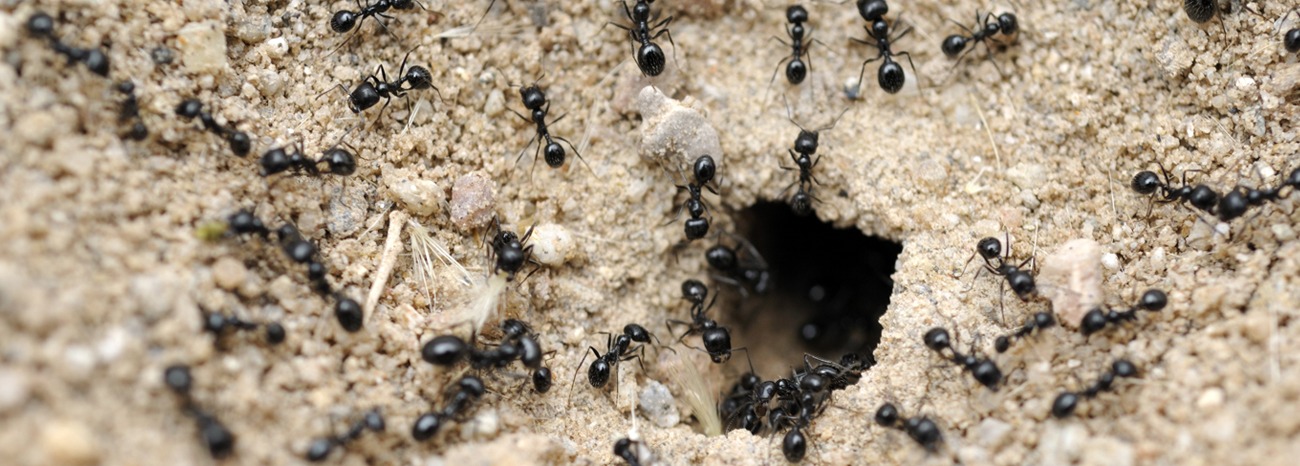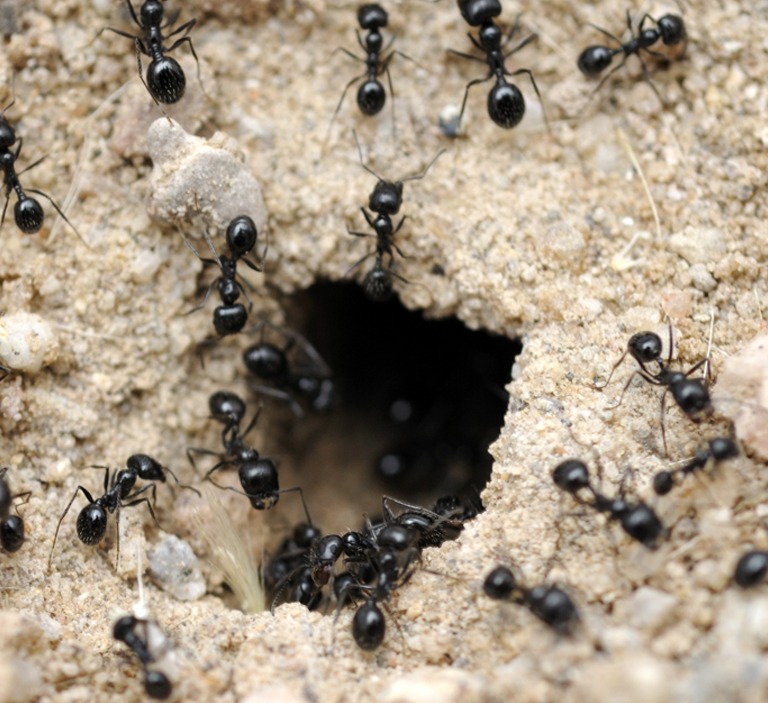The thought of an ant colony usually brings to mind a queen ant ruling over her loyal subjects. She sends them out to get food. She makes them take care of the babies. And she ensures that new eggs are produced so the colony can grow. But this isn’t exactly how it works.
Yes, the queen ant is considered the leader of the ant colony but she is not actively controlling the actions of the rest of the ants.
Ant Colony Organization
Ants are social insects who organize in colonies of varying sizes. The colony size depends on the ant species, the climate where they are living and the age of the colony.
Every single ant in the colony belongs to a caste, each with a specific role in the social structure so the colony can thrive and grow. These roles change over time, with younger ants working closer to the queen to protect her and the new offspring.
The ant colony caste system includes:
- Queen: Most ant colonies have a single queen. She is the largest ant in the colony. Even though she has wings, her location is deep within the nest to ensure her protection from predators. Her primary job is to lay thousands of eggs.
- Drones (reproductive males): Drones are the reproductive males of the colony and their single mission is to mate with the queen. Their lifespan is usually only about one week, since males die soon after mating.They have wings but drones do not usually venture outside of the nest. Drones are smaller than Worker Ants.
- Worker Ants (non-reproductive females): Worker ants are females. They do not have wings and they do not lay eggs. Their role in the colony is both caretaker and defender. They take care of the brood and forage for food for themselves and the other ants in the colony.They are in charge of nest construction and maintenance and also of protecting the colony from predators. They live anywhere from a few weeks to one year.
- Brood: The brood is the term used for the stages of the ant from fertilization to pupae. The fertilized egg hatches into a larvae and the worker ants fulfill their role of feeding and caring for them as they grow to the pupae stage and eventually emerge as adult ants.
When the future queens of the brood emerge as adults, they take a nuptial flight, leaving the nest in search of a drone to begin building a new colony.
There are rare instances when a colony does not have a queen and offspring are produced by egg-laying worker ants. Even though these worker ants are able to lay eggs, their offspring are sterile.
Ant Colony Structure
The physical structure of an ant colony is a marvel of natural engineering, designed for efficiency and survival. Ant colonies are typically housed within a system of interconnected chambers and tunnels, often referred to as nests, meticulously constructed to meet the varying needs of the colony.
Physical structure of the ant nest:
Ants build nests that can vary significantly in size and complexity, depending on the species and the age of the colony. From simple, small burrows in the ground for young or small species to vast, intricate networks for mature or larger species, these structures serve as a home base for the colony.
Contribution of the physical layout to the colony’s efficiency:
The physical layout of an ant colony is meticulously organized to promote efficiency. Specific chambers within the nest are designated for different purposes – nursery chambers for larvae, food storage areas, resting spaces for worker ants, and a special chamber for the queen.
The intricate tunneling system not only provides transportation routes, but also facilitates ventilation and temperature regulation within the nest. In some species, ants even construct ‘graveyard’ chambers where they dispose of their dead, minimizing the risk of disease spread within the colony.
Communicate to Survive
Ants have what is called a “collective super mind” that allows them to solve complicated problems together. They do this in a variety of ways, using the information provided by each member of the colony:
Rubbing antennae: When two ants meet, they communicate their roles to each other by rubbing antennae.
Releasing pheromones: Ants will release pheromones – a chemical scent – to signal to each other. Sometimes it’s to tell each other where food is located. Other times it’s a reminder of the location of the nest. It’s even a way to identify fellow members of the colony.
Sounds and body language: If there is a danger, some ants will make a squeaking sound or tap their heads on hard surfaces to alert others in the colony.
These behaviors allow the colony to decide what to do as a whole to survive. They may decide to hide in their nest. They may decide to expand their search for food. Or they may choose to divide their colony to avoid a threat.
All of these collective actions are determined by this sharing of information between individual ants.
Working Together for the Common Good
Ant colonies are impressive examples of a society working together toward a common goal for their collective good. Have you ever noticed a line of ants, each carrying the tiniest spec of food? There is power in their numbers with each ant doing their part to carry food back to the nest for the colony.
When Ants Come Marching In…To Your Home
It’s one thing to observe a line of ants marching back to their nest. It’s another to discover that a nest is in your home.
You may be tempted to try an ant spray or set up bait traps but that might only make the problem worse. These DIY tactics could trigger a warning signal back to the ant colony, causing them to set up a second location within your home.
If you notice ants within your home, give us a call. Our experienced technicians will make sure your home is ant-free quickly and safely. Call 215.799.2010 or contact us to get started.

